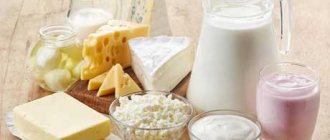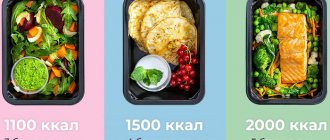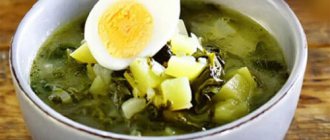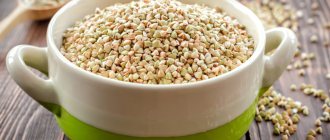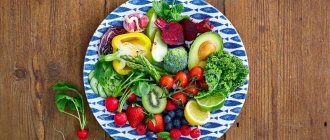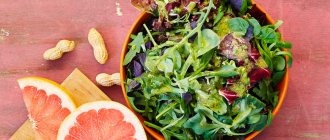Top 10 foods containing tryptophan, starting from the lowest content to the leader. Tryptophan is needed. You can find out more about what tryptophan is needed for. However, there is little of it in food. Read the article to the end and you will find out where this deficient amino acid is found in the largest quantities. And no, it's not bananas and chocolate at all. Galina Baturo and tryptophan are with you.
Tryptophan is an amino acid that is a structural component of proteins in our body. It is called the “amino acid of joy,” because tryptophan produces serotonin, the hormone responsible for the feeling of happiness. A lack of serotonin in the brain leads to the development of depression - a feeling of total dissatisfaction with oneself and life. Tryptophan is needed for the synthesis of melatonin, a sleep hormone that is formed in the brain at night and promotes sleep. Melatonin synchronizes the functioning of all organs of our body in accordance with the daily cycle. It renews cells, which promotes rejuvenation. Tryptophan improves immunity. This amino acid regulates blood glucose levels, counteracting the development of diabetes. A lack of tryptophan in the diet leads to hypogalactia in nursing mothers, i.e. insufficient production of breast milk.
The daily need for tryptophan for adults is 1-2 g.
For depression, insomnia, and also when planning pregnancy, in order to prevent hypogalactia, a “tryptophan diet” is recommended, i.e. consumption of foods rich in tryptophan.
For better absorption of tryptophan, slow carbohydrates contained in cereals are needed, as well as vitamins C - ascorbic acid, B6 - pyridoxine, B9 - folic acid. Vitamin C and B9 are found in fresh greens, and B6 is found in nuts. In addition, for the absorption of tryptophan, the microelement Magnesium (Mg) is needed, which is again found in fresh herbs, cucumbers and all green vegetables and fruits.
Products containing tryptophan: 10th place
Veal, beef, lamb, as well as salmon, cod and herring. The tryptophan content is 0.22 - 0.25 g per 100 g of product. The daily requirement is satisfied by 400-455 g of meat or fish fillet. The more tender the meat, the more tryptophan it contains. It is preferable to use meat from young animals that are well-fed; they contain more tryptophan.
Daily dose of tryptophan
It is impossible to calculate the daily intake exactly down to milligrams. This indicator will depend on age, gender, type of activity (active, passive), health status and the presence of chronic diseases. For a middle-aged person, the daily dose ranges from 1000 to 2500 mg.
Although some experts calculate it taking into account the fact that the amino acid tends to accumulate. According to the formula: per 1 kg of body weight - 4 mg Trp, the amount can range from 3.5 to 6 mg. From this formula it follows that an adult weighing 60 kg should consume 240 mg daily.
Daily consumption may fluctuate, one day - more than normal, the second day - less. It depends on the products on the daily menu, their variety and quantity. Therefore, if consumption was less one day, and more on the second, compensation occurs for the previous one.
Products containing tryptophan: 2nd place
Dutch cheese. Tryptophan content is 0.78 g per 100 g of product. The daily requirement is provided by 128 g of cheese.
Products containing tryptophan: 1st place
Caviar is black or red. Tryptophan content is 0.94 g per 100 g of product. The daily requirement is provided by 100 g of caviar.
You learned what foods you need to eat in order to saturate your body with tryptophan. Share information on social media. networks, leave comments. Galina Baturo was with you.
Beneficial properties of tryptophan
Every living organism needs protein. Proteins include amino acids. Tryptophan is considered an essential compound. It is not synthesized in the body. Intake is ensured through a balanced diet.
The amino acid is directly involved in the production of serotonin. The substance has valuable properties. It is present in the proteins of living organisms and promotes adequate metabolism.
Attention! Amino acid deficiency causes serious changes in the functioning of organs and systems.
Tryptophan is responsible for the synthesis of melatonin, which allows the body to adapt to changing times of day. The substance promotes the formation of hemoglobin and vitamin B3. The properties of the amino acid include normalizing blood pressure and regulating the functioning of the endocrine system. Thanks to tryptophan, proteins and lipids are transformed. The inclusion of the component in sports nutrition is due to its participation in recovery after physical activity.
As an antidepressant, tryptophan helps:
- getting rid of anxiety;
- uplifting mood;
- improving sleep quality;
- eliminating insomnia;
- reduction of hangover syndrome;
- reducing cravings for sweets.
Attention! The connection eliminates the symptoms of PMS. Regular intake of amino acids into the body can improve well-being during menopause.
Signs of excess tryptophan
Excess tryptophan also does not lead to anything good, although it does not appear with food up to doses of 4.5-5 g per day, which is difficult to achieve. But it is possible to earn it with dietary supplements or tablets.
Excess tryptophan appears in the body in:
- heartburn;
- stomach pain;
- nausea;
- flatulence;
- drowsiness;
- muscle weakness;
- headaches;
- swelling;
- dizziness.
More severe deficiency is accompanied by dermatitis, indigestion, and neuropsychiatric symptoms. This can lead to cardiovascular diseases, cravings for alcohol, weakening of memory and intellectual abilities.
The use of tryptophan for weight loss
The secret of the drug when taken for weight loss lies in special chemical processes that stimulate the production of serotonin, increasing the level of satisfaction, and thereby helping to quickly feel full and satisfy the feeling of hunger.
As a consequence of this process, there is a decrease in the desire to “eat something else,” which means you can regulate the number of calories and fight excess weight. At the same time, it is not contraindicated to engage in vigorous physical activity, as with other types of diet.
Tryptophan is an essential amino acid , the lack of which in the body worsens overall health and may be accompanied by frequent pain, migraines, bad mood, irritability, depression, decreased attention, excess weight and increased appetite.
Dairy products containing tryptophan
Without dairy products, it is quite difficult to imagine a complete diet. Many may not like this or that dairy product, but they are unlikely to be able to refuse some other delicacies. It's a matter of taste, but the main thing is benefits and health.
High amino acid content in dairy products:
- cheese (hard varieties);
- processed cheese;
- cottage cheese;
- kefir;
- milk;
- fermented baked milk;
- serum…
You can confidently buy dairy products, they contain a lot of tryptophan.
Amino acid content in seafood
Of course, seafood is rich in many beneficial properties for the human body. Many seafood products are a delicacy and are loved by almost everyone. But amino acids are not found in every marine life.
The richest seafood products in tryptophan:
- black and red caviar (they have the highest amino acid content);
- lobster;
- squid…
Shrimp, crab meat and many other seafood also contain amino acids, but in smaller quantities.
Tryptophan Rich Recipes
Liver cake is simply a storehouse of this amino acid. To do this, take 800 g of liver, 2 eggs, 3 carrots and 2 onions, a glass of flour and 200 g of milk. Grind the liver in a blender, add all other ingredients (except vegetables) and bake in vegetable oil in the form of pancakes. Fry the onions and carrots separately. Assemble the cake, sandwiching the pancakes with vegetables and mayonnaise.
Pea zrazy can be a very quick, healthy and tasty dish. To do this, boil a glass of peas, pass it through a blender, add garlic and 2 tablespoons of semolina. Onions and mushrooms are ideal as a filling. Roll the cutlets in breadcrumbs and fry in oil. And buckwheat is suitable as a side dish. As you can see, diversifying your diet with amino acids can be simple and inexpensive.
Amino acid preparations
Calm Formula is a dietary supplement from , which can be purchased at any pharmacy. This drug is available without a prescription. The manufacturer's instructions recommend taking one capsule twice a day; it is not necessary to tie the intake to meals. The course of using the substance is 30 days, but it is allowed to be extended if necessary.
Taking tryptophan in moderation allows you to maintain your body shape, helps you always be stress-resistant, calm and confident.
In legume products
These products are especially rich in amino acids; they not only lift your spirits, but are also very beneficial for our body as a whole. Bean products are especially necessary for those people whose work involves mental stress.
High amino acid content in legumes:
- beans;
- soya beans;
- peas…
This also includes cereals and pasta:
- buckwheat;
- oatmeal;
- pearl barley;
- barley grits;
- rice…
Tryptophan is contained in higher quantities in pasta, in higher varieties.
The importance of tryptophan in sports nutrition
Tryptophan's ability to control appetite and induce a feeling of fullness plays a significant role in the nutrition of athletes and fitness enthusiasts.
Another property that is valued in tryptophan is that it increases the ability to perform great physical activity.
Fat burner for women: main methods of administration and tips on how to choose sports nutrition for weight loss (125 photos and videos)Glucosamine chondroitin - instructions for use, tips on how to take the complex and tips on using sports nutrition
The best fat burners - the best sports drugs and a description of their action. 70 photos and instructions for use
Tryptophan contraindications and side effects
Medicines containing amino acids are contraindicated during pregnancy and lactation. It is taken with caution and only after consulting a doctor for cataracts, diabetes, and bladder cancer.
Side effects in case of overdose include digestive disorders (diarrhea, nausea, vomiting). During the day, the substance may cause excessive drowsiness. Therefore, you cannot drive after taking tablets with this amino acid. These symptoms are more likely to occur when taking medications rather than food.
To get rid of depression and bad mood, you need to eat the right foods rich in tryptophan. This substance works wonders on the nervous system. The list of dishes rich in amino acids is not so short - everyone can create a menu to their liking.
Tryptophan nutritional supplements: how to take, dosage
Dietary supplements with Tryptophan are presented on the market by different manufacturers:
- Evalar.
- Life Extension.
- NSP.
- Doctors BEST.
- Source Naturals.
- Jarrow formulas.
There are also analogues that contain not only aromatic aminocarboxylic acid, but also additional substances: glycine, threonine, methionine. Tryptophan is available in several forms: tablets, powder, capsules and as a sports nutrition supplement.
The dosage of one of the drugs should be selected by the doctor after collecting anamnesis, passing tests and taking into account the patient’s chronic diseases:
- Insomnia. Prescribed from 500 mg per day, gradually increasing to 2000 mg.
- Depression – from 3000 to 6000 mg.
- For the treatment of headaches and other types of pain – from 2000 to 4000 mg.
- For athletes - from 2000 to 5000 mg.
- For decreased appetite – from 500 to 2000 mg.
- PMS - from 1500 to 4000 mg.
It is taken in a long course from 1 month to six months, and if necessary, the doctor can extend the period of use for several months.
For frequent headaches, PMS, migraines, depression, athletes divide the tablets into several doses per day. Morning intake is important for those who are losing weight or complaining of decreased appetite. When treating insomnia, it is best to take it at night.
Tryptophan - the secret to a good mood
Since this compound is responsible for the production of serotonin, it is classified as an antidepressant. Tryptophan has a whole list of beneficial qualities:
- relieves feelings of fear and anxiety;
- lifts the mood, gives joy, a feeling of happiness;
- improves sleep quality, relieves insomnia;
- reduces hangover;
- reduces appetite and cravings for sweets, which is important when losing weight.
For women, this is a necessary compound, as it eliminates the symptoms of PMS and irritability, and also improves the condition during menopause. The amino acid is important for a good mood, which is especially valuable when dieting.
The role of tryptophan in the body
Tryptophan is a precursor to the “happiness hormone” serotonin and the “sleep hormone” melatonin. With its deficiency, depression and insomnia develop. The body also synthesizes niacin (vitamin PP) from it, which plays an important role in cellular metabolism, DNA repair, and is also an antioxidant.
Serotonin regulates digestion by controlling intestinal motility. Large doses lead to diarrhea.
Our mood is highly dependent on the level of serotonin. A low level manifests itself in depression, fatigue, irritability, a high level manifests itself in calmness, a feeling of happiness, concentration, and an excessively high level manifests itself in hallucinations and neuromuscular disorders.
Melatonin is synthesized from serotonin in the pineal gland. It regulates daily and seasonal rhythms, slows down the aging process, and stimulates the immune system.
The highest concentration in the blood is observed during night sleep, since melatonin is produced in the dark. Melatonin levels are low during the day.
Cereals and porridges
For the body to function properly, it is important to eat porridge. Scientists have different opinions about which exactly contains this amino acid. It is generally accepted that in buckwheat and oatmeal. Porridges contain complex carbohydrates that balance blood glucose levels.
Moreover, such carbohydrates normalize insulin levels. It is directly involved in the transport of tryptophan, directly to the brain.
Table of tryptophan content in food
| Product | Tryptophan | % of the daily value in 1 serving weighing 200g. |
| Red caviar | 960 mg | 192% |
| black caviar | 910 mg | 182% |
| Dutch cheese | 780 mg | 156% |
| peanut | 750 mg | 150% |
| almond | 630 mg | 126% |
| cashew | 600 mg | 120% |
| processed cheese | 500 mg | 100% |
| Pine nuts | 420 mg | 84% |
| rabbit, turkey meat | 330 mg | 66% |
| halva | 360 mg | 72% |
| squid | 320 mg | 64% |
| horse mackerel | 300 mg | 60% |
| sunflower seeds | 300 mg | 60% |
| pistachios | 300 mg | 60% |
| chicken | 290 mg | 58% |
| peas, beans | 260 mg | 52% |
| herring | 250 mg | 50% |
| veal | 250 mg | 50% |
| beef | 220 mg | 44% |
| salmon | 220 mg | 44% |
| cod | 210 mg | 42% |
| mutton | 210 mg | 42% |
| fat cottage cheese | 210 mg | 40% |
| chicken eggs, | 200 mg | 40% |
| pollock | 200 mg | 40% |
| chocolate | 200 mg | 40% |
| pork | 190 mg | 38% |
| low-fat cottage cheese | 180 mg | 36% |
| carp | 180 mg | 36% |
| halibut, pike perch | 180 mg | 36% |
| low-fat cottage cheese | 180 mg | 36% |
| buckwheat | 180 mg | 36% |
| millet | 180 mg | 36% |
| sea bass | 170 mg | 34% |
| mackerel | 160 mg | 32% |
| oatmeal | 160 mg | 32% |
| dried apricots | 150 mg | 30% |
| mushrooms | 130 mg | 26% |
| barley groats | 120 mg | 24% |
| pearl barley | 100 mg | 20% |
| wheat bread | 100 mg | 20% |
| fried potatoes | 84 mg | 16.8% |
| dates | 75 mg | 15% |
| boiled rice | 72 mg | 14.4% |
| Boiled potatoes | 72 mg | 14.4% |
| Rye bread | 70 mg | 14% |
| prunes | 69 mg | 13.8% |
| greens (dill, parsley) | 60 mg | 12% |
| beet | 54 mg | 10.8% |
| raisin | 54 mg | 10.8% |
| cabbage | 54 mg | 10.8% |
| bananas | 45 mg | 9% |
| carrot | 42mg | 8.4% |
| onion | 42 mg | 8.4% |
| milk, kefir | 40 mg | 8% |
| tomatoes | 33 mg | 6.6% |
| apricots | 27 mg | 5.4% |
| oranges | 27 mg | 5.4% |
| pomegranate | 27 mg | 5.4% |
| grapefruit | 27 mg | 5.4% |
| lemon | 27 mg | 5.4% |
| peaches | 27 mg | 5.4% |
| cherry | 24 mg | 4.8% |
| strawberry | 24 mg | 4.8% |
| raspberries | 24 mg | 4.8% |
| tangerines | 24 mg | 4.8% |
| honey | 24 mg | 4.8% |
| plums | 24 mg | 4.8% |
| cucumbers | 21 mg | 4.2% |
| zucchini | 21 mg | 4.2% |
| watermelon | 21 mg | 4.2% |
| grape | 18 mg | 3.6% |
| melon | 18 mg | 3.6% |
| persimmon | 15 mg | 3% |
| cranberry | 15 mg | 3% |
| apples | 12 mg | 2.4% |
| pears | 12 mg | 2.4% |
| pineapples | 12 mg | 2.4% |
Tryptophan in dietetics
Now you can buy a drug containing this substance at any pharmacy. However, doctors have developed a “tryptophan diet”.
Every day, the human body needs to consume 350 grams of food with tryptophan. Scientist Luca Passamonti is a supporter of this diet, he claims that it reduces aggressiveness and even helps prevent suicide, although it is not known in what quantities.
The average requirement for tryptophan per person per day is only 1 gram. The human body does not produce tryptophan on its own. However, the need for it is very great, since it is involved in the structure of proteins. Protein determines at what levels the human nervous and cardiac systems will work.
However, if a large amount of tryptophan enters the body, the following may occur:
- Growth disorders
- Weight problems: gain or loss,
- Insomnia,
- Irritability,
- Memory impairment
- Loss of appetite
- Excessive consumption of unhealthy foods,
- Headache.
Please note: an excess of the substance is harmful and, in some cases, extremely dangerous for humans. Pain in muscle joints and various swelling of the limbs are common. Doctors recommend taking the amino acid with food, and not with medications.
It is not at all necessary to consume only those foods that contain a large amount of tryptophan. It is quite enough to eat a balanced diet and monitor the quality of food.
Tryptophan is one of the ten essential amino acids used by the human body to synthesize vital and essential proteins. This substance takes an active part in the functioning of the central nervous system, especially in processes associated with sleep, rest and relaxation.
A deficiency of the compound is very dangerous for the body, as it leads to malaise, both physical and emotional, as well as a significant deterioration in metabolic processes. We’ll talk about the sources of the substance, as well as the daily requirement and role of amino acids in the human body.
